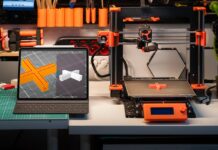In the dynamic landscape of modern manufacturing, two technological marvels have emerged as game-changers: additive manufacturing, commonly known as 3D printing, and computer numerical control (CNC) machining. These processes have revolutionised traditional manufacturing methods, pushing the boundaries of precision, design intricacy, and efficiency. As we embark on a journey to explore the synergy between 3D printing and CNC machining in Melbourne’s context, it’s essential to grasp the fundamental aspects that make these technologies the driving force behind innovation.
Brief Overview of Additive Manufacturing (3D Printing) and CNC Machining
Additive Manufacturing (3D Printing): At its core, 3D printing is a revolutionary technique that constructs objects layer by layer from digital designs. This process eliminates the need for moulds, dies, and tooling, enabling the creation of intricate and complex geometries that were once deemed impossible. Melbourne’s industrial landscape has been quick to embrace this technology, leveraging its potential to accelerate prototyping and small-scale production.
Computer Numerical Control (CNC) Machining: On the other side of the spectrum lies CNC machining, a subtractive manufacturing process where computer-controlled machines intricately carve away material from a solid block, resulting in highly precise and accurate parts. This process has long been the backbone of manufacturing industries in Melbourne, ensuring reliability and quality in components that demand the utmost precision.
Benefits of 3d printing and CNC Machining
| Benefits | 3D Printing | CNC Machining |
| Design Flexibility | Allows complex geometries and intricate designs to be created with ease, including internal structures. | Suited for precise and intricate designs, though some limitations on complexity compared to 3D printing. |
| Rapid Prototyping | Enables quick iteration and testing of designs, reducing development cycles and time-to-market. | Efficient for prototyping, but may require more setup time for tooling and programming. |
| Material Variety | Supports a growing range of materials, including plastics, metals, ceramics, and more. | Versatile in working with various materials like metals, plastics, wood, and composites. |
| Cost-Effectiveness | Cost-efficient for low-volume production and complex designs due to reduced tooling costs. | Efficient for medium to high volumes, with reduced unit costs as quantity increases. |
| Customisation | Ideal for producing customised and one-of-a-kind items, as changes to design can be made quickly. | Allows for customisation, but may require more extensive programming for design alterations. |
| Waste Minimization | Generates less waste as material is deposited layer by layer, reducing material wastage. | Generates waste from subtractive process; efforts can be made to optimise material usage. |
| Surface Finish | Generally provides smoother surface finishes with layer lines becoming less prominent with advanced methods. | Provides high-quality surface finishes, suitable for parts with tight tolerances. |
| Speed of Production | Slower for large, intricate parts due to layer-by-layer deposition. | Faster for larger quantities and certain geometries, especially with optimised tool paths. |
| Complex Assemblies | Can create complex assemblies as a single integrated piece, reducing assembly requirements. | Suited for parts that need to be assembled, especially if involving multiple materials. |
| Post-Processing | Some processes may require post-processing to improve surface finish or mechanical properties. | May require less post-processing, but critical parts might still need finishing operations. |
| Material Properties | Material properties can vary based on 3D printing method and material used. | Retains material properties of the chosen material, with precision in mechanical characteristics. |
| Application Diversity | Widely used in rapid prototyping, custom parts, and small-scale production. | Suitable for various applications including prototypes, end-use parts, and large-scale production. |
Importance of Precision and Accuracy in Manufacturing Processes
Precision and accuracy are critical aspects of manufacturing processes that play a significant role in ensuring the quality, reliability, and cost-effectiveness of products. Both terms refer to different aspects of measurement and consistency, and they are essential for maintaining high standards in various industries. Here’s a breakdown of their importance:
Precision:
Precision refers to the degree of consistency and repeatability of measurements or outcomes in a manufacturing process. A process is considered precise if it consistently produces similar results under the same conditions. Precision is important for several reasons:
- Quality Assurance: Precision ensures that products meet strict quality standards. When dimensions, tolerances, and specifications are consistently met, it results in reliable and well-functioning products. This meticulous attention to detail not only enhances customer satisfaction but also minimises defects and recalls, ultimately boosting the brand’s reputation and fostering long-term customer loyalty. Companies that prioritise precision in quality assurance demonstrate their commitment to delivering excellence and maintaining the highest level of trust within the market.
- Reduced Waste: Precise manufacturing processes produce fewer defective or out-of-spec products. This leads to a reduction in waste of materials, time, and resources. As a result, not only does this drive cost savings for the company, but it also contributes to a more sustainable and environmentally-conscious production approach, aligning with today’s growing emphasis on responsible and efficient resource management.
- Cost-Efficiency: Less waste and fewer defects mean lower production costs. Precision minimises the need for rework, repairs, and the scrapping of defective products. This not only streamlines operational expenses but also allows companies to allocate resources more effectively, invest in innovation, and potentially pass on these cost benefits to consumers, further enhancing their competitive edge in the market.
- Customer Satisfaction: Precise manufacturing processes lead to products that perform as expected, enhancing customer satisfaction and trust in the brand. When customers consistently receive products that meet or exceed their quality expectations, it fosters positive word-of-mouth referrals and repeat business, creating a loyal customer base that becomes a powerful advocate for the company’s offerings. This strong reputation for delivering reliable and high-performing products can result in increased market share and sustained success in the long run.
- Interchangeability: Precision enables components to be interchangeable, meaning they can be easily swapped without affecting the functionality or performance of the final product. This not only simplifies maintenance and repairs but also facilitates upgrades and customisation options for customers, allowing them to adapt products to their evolving needs without the hassle of compatibility issues. The seamless interchangeability of precision-engineered parts further enhances the overall user experience and extends the product’s lifespan, contributing to greater convenience and value for consumers.
Accuracy:
Accuracy refers to the closeness of a measurement or result to the true or intended value. In manufacturing, accuracy ensures that products are manufactured to meet the exact specifications and requirements. Accuracy is crucial for the following reasons:
- Functional Performance: Accurate dimensions and specifications are essential for components to fit together properly and for the product to perform as intended. This meticulous attention to detail not only ensures optimal functionality but also enhances the overall user experience. It ultimately contributes to a product’s reputation for reliability and precision in meeting the needs of its users.
- Safety: In industries where safety is paramount, such as aerospace or medical devices, accuracy is critical to prevent catastrophic failures that could lead to accidents or injuries. The precise alignment of intricate components in these sectors is a fundamental factor in avoiding potential risks, ensuring that every intricate mechanism functions flawlessly even under extreme conditions. By maintaining strict adherence to accurate dimensions, these industries prioritise not only the functionality of their products but also the well-being of users and operators.
- Regulatory Compliance: Many industries are subject to strict regulations and standards. Accurate manufacturing ensures compliance with these standards, avoiding legal and financial repercussions. By meticulously adhering to precise dimensions and specifications, companies can confidently navigate complex regulatory landscapes, guaranteeing that their products meet the necessary criteria for quality, safety, and environmental sustainability.
- Productivity: Accurate measurements reduce the need for rework and adjustments, leading to faster production times and increased overall productivity. With precise dimensions and specifications, each step of the manufacturing process becomes more streamlined, minimising costly errors and ensuring that resources are effectively utilised. This commitment to accuracy not only accelerates production schedules but also bolsters a company’s reputation for delivering consistent, high-quality products.
- Innovation: Accurate manufacturing processes are the foundation for innovation, providing a solid platform upon which engineers and designers can build revolutionary advancements. The reliability of precise measurements allows them to push the boundaries of what’s possible, confidently developing new technologies and products. By anchoring their creative endeavours in accuracy, these innovators can explore uncharted territories, leading to breakthroughs that reshape industries and elevate human progress.
Growing Trend of Integrating 3D Printing and CNC Machining for Enhanced Results
In the realm of manufacturing, where innovation is the driving force, a dynamic trend has emerged that promises to reshape industries across the globe. The convergence of two formidable technologies, 3D printing and CNC machining, is creating waves of transformation, offering a potent combination that enhances precision, accelerates production, and fuels unparallelled creativity. This trend of integrating 3D printing and CNC machining is not merely a passing phase; it’s a seismic shift that’s poised to redefine manufacturing landscapes across various sectors.
A Paradigm Shift in Manufacturing
Traditionally, 3D printing and CNC machining were perceived as distinct manufacturing methods, each with its unique strengths and applications. 3D printing offered design freedom and rapid prototyping capabilities, while CNC machining excelled in achieving precision and creating intricate parts. However, the amalgamation of these technologies ushers in a new era, where their individual strengths are magnified when they work in tandem.
Synergy of Strengths
The true magic lies in the synergy that occurs when 3D printing and CNC machining join forces. 3D printing can create complex geometries and prototypes quickly, while CNC machining ensures the final product meets the strictest standards of accuracy. The integration allows for the design intricacies of 3D-printed components to be refined and perfected through CNC machining, resulting in products that are not only innovative but also of superior quality.
Elevating Design Flexibility
The convergence of 3D printing and CNC machining unlocks a realm of design possibilities that were previously constrained. Intricate shapes, unconventional geometries, and components with integrated functionalities can now be realised with unparallelled precision. This newfound design flexibility is empowering engineers and designers to push boundaries, fostering a culture of innovation that is defining the future of manufacturing.
Redefining Prototyping and Production
One of the most significant impacts of this trend is felt in the realms of prototyping and production. Prototyping, which often involved multiple iterations and delays, can now be expedited with hybrid manufacturing. The seamless transition from 3D printing prototypes to CNC-machined final products minimises lead times and accelerates time-to-market. This not only enhances efficiency but also paves the way for rapid innovation cycles.
Applications Across Industries
The trend of integrating 3D printing and CNC machining is not confined to a single industry. From aerospace to healthcare, from automotive to consumer electronics, the benefits resonate across sectors. Aerospace companies are producing lightweight yet robust components, medical devices are becoming more patient-specific, and automotive manufacturers are creating optimised designs for superior performance.
Embracing the Future
As this trend gathers momentum, manufacturers worldwide are realising its transformative potential. The capability to combine the strengths of 3D printing and CNC machining isn’t just about staying competitive; it’s about leading the charge in shaping the future of manufacturing. The evolution is not only technological but also cultural, encouraging collaboration, innovation, and a relentless pursuit of excellence.
Applications in Melbourne: Harnessing the Power of 3D Printing and CNC Machining
In the heart of Melbourne, the convergence of 3D printing and CNC machining is sparking a renaissance in manufacturing, fuelling a wave of innovation that touches diverse industries. This integration isn’t just theoretical; it’s being harnessed in practical and tangible ways, each application a testament to the transformative potential of this dynamic duo.
1. Aerospace and Defence Industry
- Production of Lightweight, High-Performance Components: Melbourne’s aerospace industry is at the forefront of leveraging integrated 3D printing and CNC machining. By combining the design freedom of 3D printing with the precision of CNC machining, engineers are crafting lightweight components that enhance aircraft and spacecraft performance. These components exhibit the perfect balance of strength, weight, and intricacy, leading to fuel efficiency and reduced operational costs.
- Improved Maintenance and Repair Processes: The integration of these technologies isn’t confined to production alone. Melbourne’s aerospace and defence sectors are also benefiting from more efficient maintenance and repair processes. Complex parts that would traditionally require extensive lead times can now be recreated swiftly through the hybrid approach, minimising downtime and optimising operations.
2. Medical Device Manufacturing
- Custom Implants and Prosthetics: The medical landscape in Melbourne is experiencing a revolution fuelled by integrated 3D printing and CNC machining. Custom implants and prosthetics tailored to individual patients are becoming a reality. The accuracy of CNC machining ensures that these implants fit precisely, reducing the risk of complications and improving patient outcomes.
- Patient-Specific Surgical Guides: Surgeons in Melbourne are reaping the benefits of patient-specific surgical guides produced through this integration. These guides, crafted with meticulous precision, enhance the accuracy of surgeries, resulting in shorter recovery times and improved surgical success rates.
3. Automotive Sector
- Prototyping of Vehicle Parts: Melbourne’s automotive industry is harnessing integrated 3D printing and CNC machining for rapid prototyping of vehicle components. From intricate engine parts to complex interior components, the synergy between these technologies accelerates the design and testing phase, streamlining the path to production.
- Performance Enhancement through Integrated Designs: Performance isn’t just about horsepower; it’s about optimising design. Melbourne’s automotive innovators are leveraging the hybrid approach to create integrated designs that enhance vehicle performance. Lightweight yet robust components are realised, resulting in vehicles that excel in both efficiency and power.
4. Creative Arts and Architecture
- Complex Sculptures and Artistic Structures: Melbourne’s creative spirit finds a new canvas in the integration of 3D printing and CNC machining. Artists and sculptors are bringing their visions to life with intricate sculptures that were once mere dreams. The precision of CNC machining adds a refined touch to these creations, enhancing their beauty and detail.
- Innovative Architectural Models and Components: Architects in Melbourne are pushing the boundaries of design through the integration of these technologies. From innovative models that visualise complex structures to components that challenge conventional aesthetics, the fusion of 3D printing and CNC machining is reshaping the city’s architectural landscape.
At the core of Melbourne’s industrial landscape, the symbiotic integration of 3D printing and CNC machining isn’t a mere catchphrase; it’s the very pulse of advancement. In every application, we witness the seamless harmony of these technologies, culminating in an orchestra of potential that thrives where innovation surpasses boundaries and precision takes centre stage. With each industry’s embrace of this dynamic fusion, Melbourne firmly solidifies its stature as the epicentre of pioneering 3D printing in Melbourne, where cutting-edge manufacturing converges with unmatched creative ingenuity.
Future Directions and Trends: Shaping Tomorrow through Integrated 3D Printing and CNC Machining
As Melbourne’s manufacturing landscape continues to evolve, the horizon is ablaze with promises of transformative advancements. The integration of 3D printing and CNC machining serves as a guiding light, steering industries toward a future characterised by innovation, sustainability, and skill excellence.
1. Evolving Technologies
- Advances in 3D Printing and CNC Machining Processes: The evolution of these foundational technologies is an ongoing journey. Melbourne’s manufacturing sector eagerly anticipates further refinements in 3D printing and CNC machining processes. From faster printing speeds to enhanced precision in machining, these technological leaps will amplify the benefits of integration, allowing industries to achieve even higher levels of quality and efficiency.
- Integration with Emerging Technologies (IoT, AI): The fusion of 3D printing and CNC machining is poised to intersect with other transformative forces, notably the Internet of Things (IoT) and Artificial Intelligence (AI). The marriage of these technologies holds the potential to create smart manufacturing systems that adapt, optimise, and self-correct in real time, ushering in a new era of autonomous and data-driven production.
2. Sustainable Manufacturing
- Reduced Waste and Energy Consumption through Integration: Sustainability is no longer a distant goal but a necessity for industries to thrive. The integration of 3D printing and CNC machining aligns seamlessly with this ethos. The precision-driven hybrid approach reduces material wastage and energy consumption, directly contributing to eco-friendly manufacturing practises that resonate with Melbourne’s commitment to a greener future.
- Recycling and Circular Economy Aspects: As the world pivots toward circular economies, Melbourne’s industries are harnessing the potential of integrated manufacturing to realise closed-loop systems. The combination of 3D printing’s material versatility and CNC machining’s precision enables the repurposing and recycling of materials, turning waste into valuable resources.
3. Training and Skill Development
- Workforce Adaptation for Hybrid Manufacturing: The integration of 3D printing and CNC machining necessitates a workforce equipped with hybrid skills. Melbourne’s industrious spirit is met with the challenge of upskilling its workforce, preparing them to seamlessly navigate between these integrated technologies. Adaptation is key, and Melbourne’s workforce is poised to embrace the demands of this exciting new era.
- Education and Training Initiatives in Melbourne: Melbourne’s commitment to fostering innovation extends to education and training. The city’s institutions are pioneering curricula that bridge the gap between 3D printing and CNC machining, ensuring that future generations are well-prepared to excel in this hybrid manufacturing landscape.
The journey into the realm of enhancing precision and accuracy through the integration of 3D printing and CNC machining in Melbourne has been nothing short of transformative. From the heart of this vibrant city’s industries, a new narrative has emerged—a narrative characterised by creativity, efficiency, and excellence. The convergence of these technologies isn’t just a fleeting trend; it’s a definitive shift that’s propelling Melbourne’s manufacturing landscape into a new era of possibilities.
However, this transformation is not confined to the present. It extends into the future, where evolving technologies promise to amplify the integration’s impact. The emergence of smarter manufacturing systems, sustainable practises, and a skilled workforce all contribute to the tapestry of Melbourne’s manufacturing prowess.














